Step 1: Anticipation
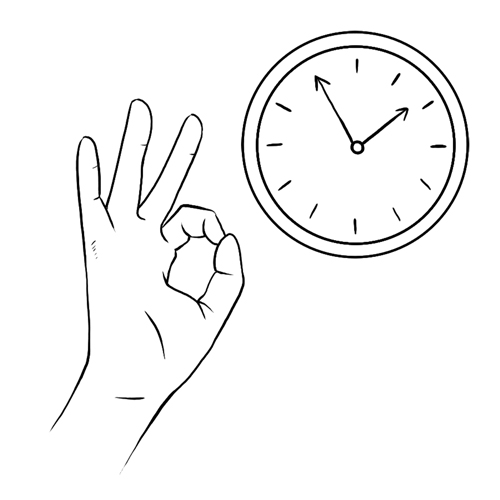
|
See the full description here
Summary:
Collaborate and form a team with your child. When you invest the time to form a strong team, children feel more comfortable and less anxious – this will help you complete the care with less stress – for you and your child.
Use these tips, from the start, to set the stage for a positive care procedure:
- Create the right moment: integrate the care in a routine.
- Alert your child to the needed care and communicate together.
- Form a team with your child: Encourage autonomy by offering realistic choices such as the method of distraction. Stay tuned to your child. Manage pain and anxiety, using distraction and positioning for comfort.
|
|
Step 2: Preparation
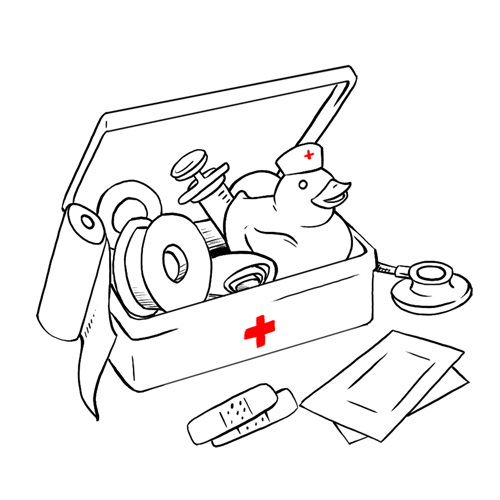
|
See the full description here
Summary:
- Prepare the environment: Identify a routine place for care. Close windows, doors and fans. Wash and dry the work surface and gather the needed materials for the care and to distract your child.
- Prepare your child: Get help if needed. Position your child for comfort to receive the care and start to use the selected distraction method.
- Prepare yourself: Find the right time when you are ready to provide the care safely. Review the list of care steps. Wash your hands.
Now that you are ready to start the care procedure, take the opportunity to encourage and praise your child.
|
|
Step 3: Procedure

|
See the full description here
Summary 3 key concepts:
- Safety: Carefully follow the care practice steps as you have been taught.
- Flexibility: Be ready to adjust according to your child’s reactions during the procedure. As needed, reposition or select an alternative distraction strategy. Follow your child’s pace and rhythm.
- Collaboration: Reassure your child, verbally and non-verbally. Acknowledge your child’s emotions and reactions. Help your child differentiate between the different sensations during a procedure.
|
|
Step 4: Prepare the elastomeric infusion pump
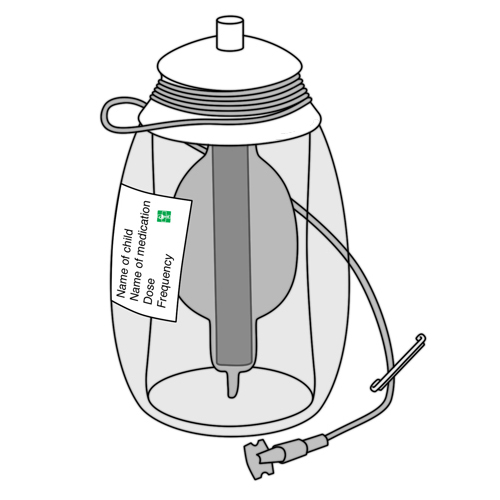
|
- Make sure that the infusion pump containing the medication is at room temperature.
- Check the label to verify:
- your child’s name,
- the medication has not expired,
- the drug name and dose are the same as those prescribed for your child.
- Inspect the pump carefully. It must not contain air bubbles or particles. If this is the case, contact your pharmacy or healthcare team.
Why ? This step ensures the safety of the procedure and helps to prevent medication errors.
|
|
Step 5: Prepare the materials
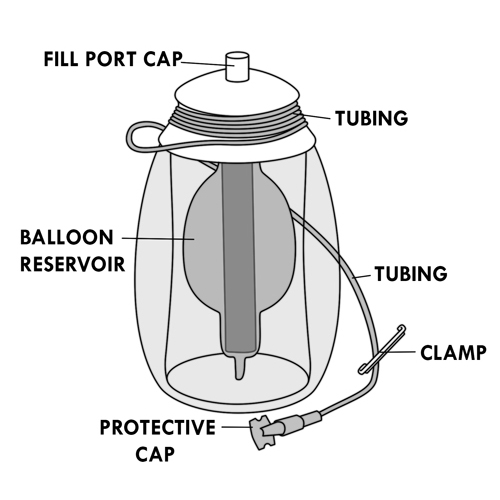
|
- Select and clean a work surface (eg, tabletop).
- Gather the necessary equipment.
- Check that:
- the balloon and the tubing of the perfusion pump are not broken or split,
- the drug does not leak,
- the cap located at the end of the tubing is present,
- the filling site cap is in place.
Why ? This step ensures the safety and allows the rest of the procedure.
|
|
Step 6: Position your child

|
Position your child:
- to securely reach the catheter entry site,
- in one of the positions discussed with your healthcare team,
- depending on comfort, age and ability to collaborate.
Why ? This step facilitates the work.
|
|
Step 7: Monitor the catheter site
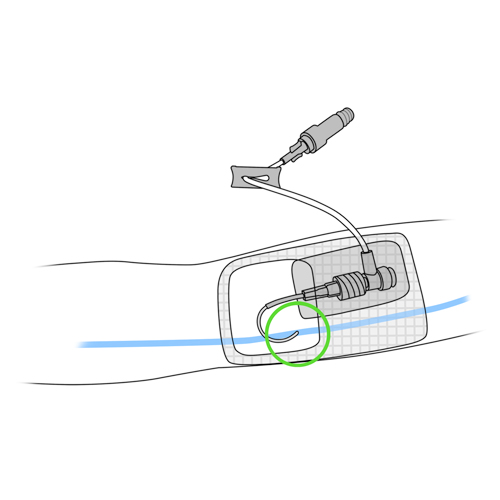
|
Refer to steps 5 through 8 of the care method Monitoring of the catheter site.
Why ? This step helps to quickly detect problems.
|
|
Step 8: Irrigate the catheter with the saline solution
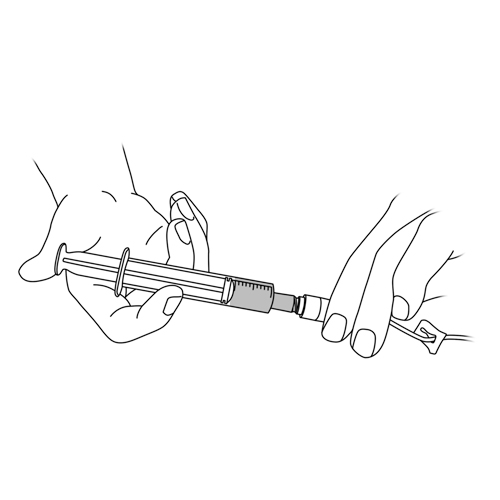
|
Why ? This step removes deposits that accumulate in the catheter and prevents it from blocking.
|
|
Step 9: Connect the pump tubing to the needleless connector

|
- Disinfect needleless catheter connector.
- Take the tubing of the perfuser with one hand and remove its protective cap with the other.
- Make sure that nothing touches the end of the tubing to avoid contaminating it.
- Take the needleless connector between the thumb and forefinger of one hand.
- With the other hand, insert the end of the tubing of the infuser.
- Turn clockwise about 1/4 turn until the connection is tight.
Why ? This step allows the rest of the procedure and avoids contamination.
|
|
Step 10: Administer the drug
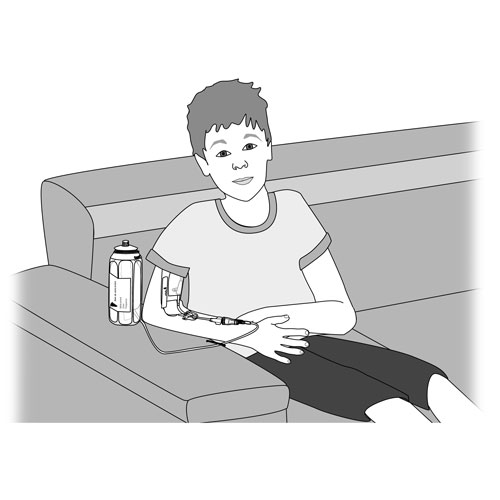
|
- Open all clamps.
- The drug enters the catheter very slowly. The duration of infusion varies according to the medical prescription.
- During the drug administration, the balloon gradually decreases in volume.
|
|
Step 11: Secure the elastomeric infusion pump
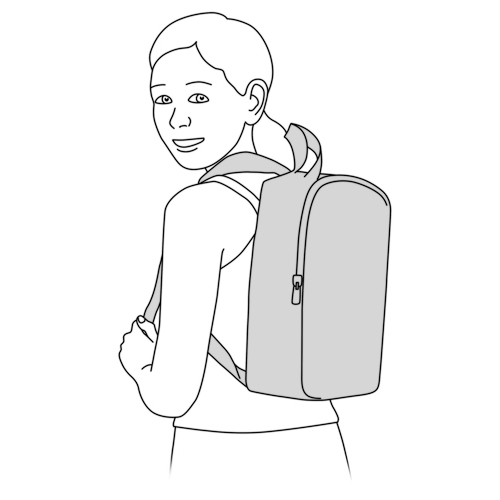
|
- Place the pump near your child’s body in a pocket of clothing, a waist pack or a backpack.
- If possible, keep the elastomeric infusion pump at the same level as the catheter insertion site.
Why ? This step helps protect the pump and ensure proper flow of the drug.
|
|
Step 12: Check the end of the infusion
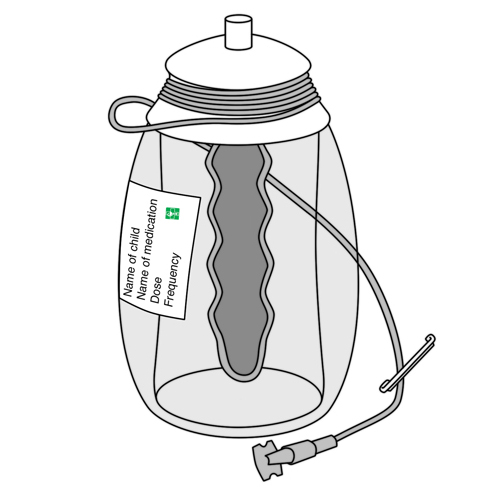
|
Administration of the antibiotic dose is complete when the balloon is empty, flattened and small ridges are visible.
Why ? This step verifies that the medication has been administered and that the balloon is empty.
|
|
Step 13: Disconnect the pump tubing from the needleless connector
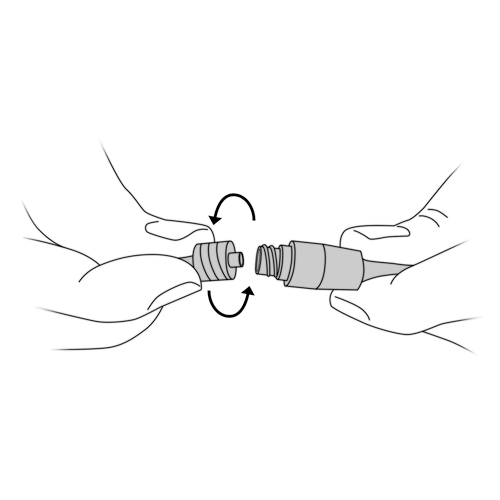
|
- Wash your hands again.
- Close all clamps.
- Hold the needleless connector between the thumb and forefinger of one hand.
- With the other hand, disconnect the tubing from the perfuser by turning its end counterclockwise.
- Put the empty perfusion pump and tubing in the trash.
Why ? This step completes the medication administration and prepares for final flushing of the catheter.
The use of both your hands prevents the needleless connector from unscrewing instead of the tubing.
|
|
Step 14: Irrigate the catheter with the saline solution
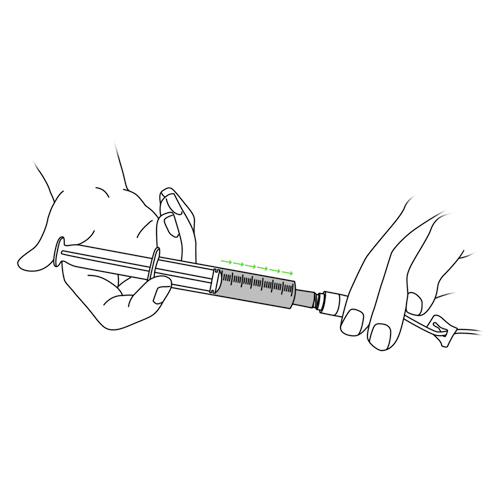
|
Why ? This step removes deposits that accumulate in the catheter and prevents it from blocking.
|
|
Step 15: Irrigate the catheter with the locking solution, if necessary

|
Instructions how to irrigate the catheter here.
Why ? This step prevents the formation of clots at the tip of the catheter when a prolonged period is expected before its next use.
|
|
Step 16: Monitor the catheter site

|
Refer to steps 5 through 8 of the catheter site monitoring procedure.
At the end, make sure that all the clamps are closed.
Why ? This step allows you to verify that the catheter site is intact.
|
|
Step 17: Recovery

|
See the full description here
Summary:
The treatment is finished. Wash your hands again.
Be prepared to recognize the challenges faced and to provide positive feedback. Help your child recognize his/her strengths. Acknowledge the collaborative teamwork.
- Listen to what your child says about the parts of the procedure that were difficult or painful.
- Comfort your child and recognize your child’s collaboration with positive feedback.
- Highlight your child’s specific strengths that helped make the procedure positive.
- Discuss with your child what might be done the same or differently the next time the care is needed.
- Keep your promises if you have promised a reward, follow through.
- Reward yourself too.
|
|
![]()